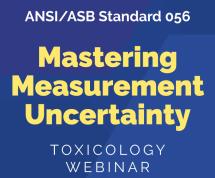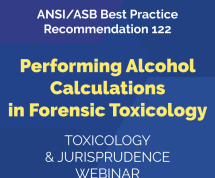Search
Explore content from JFS, ASB, the AAFS Newsfeed, and other content using the search bar or filters.
Forensic Toxicology: Terms and Definitions

Terminology for a Suspected Pattern of Dental Origin

Standard for Collection and Preservation of Document Evidence

Negative histopathology of Lichtenberg figures in lightning deaths supports physiologic...
Lichtenberg figures are an uncommon consequence of lightning strikes, characterized by unique, branching patterns that resemble tree‐like structures on the skin. There are several theories on the possible mechanism by which these Lichtenberg figures are produced on the body, supp...
Research on adversarial identification methods for AI‐generated image software Craiyon V3
With the rapid development of diffusion models, AI generation technology can now generate very realistic images. If such AI‐generated images are used as evidence, they may threaten judicial fairness. Taking the adversarial identification of images generated by Craiyon V3 software...
Decision trees for estimating osteological sex from the skull using an expanded suite of...
Osteological sex estimation utilizing morphological traits of the skull primarily focuses on a set of five traits. Developing new models with an expanded suite of traits has the potential to increase sex classification accuracies and improve the classification of partial and frag...
Abuse of gabapentinoids in individuals with substance use disorders
The abuse of gabapentinoids has increased rapidly, and death cases have been reported with increasing rates. This study examines the toxicological analysis data of substance abuse cases conducted after legal regulations were implemented in Türkiye. The focus will be on the medico...
Human tissue oxygen and strontium isotope values in North America: A data compilation and...
The use of isotopic analysis for human mobility, geolocation, and forensic identification has become common over the past two decades, yet its effectiveness depends on the availability of well‐documented reference data. Many reference data exist in the literature, but the suitabi...
The application of decision trees for estimating osteological sex from common measurements...
Skull measurements are commonly evaluated for osteological sex estimation in forensic anthropology, and decision tree‐based classification models for the skull may improve accuracy compared to current metric methods. Additionally, decision trees can provide accurate sex classific...
Massive intramuscular hemorrhage of the tongue caused by hanging
Intramuscular hemorrhage of the tongue is frequently observed when the neck is compressed. Airway obstruction caused by massive hemorrhagic tongue edema has been reported. Herein, we report an autopsy case of massive intramuscular hemorrhage of the tongue caused by suicide via ha...
Best Practice Recommendation for the Preparation of Test Impressions from Footwear and...

Participate on a Jurisprudence Section Committee!
2025 International Conference on Forensic Nursing Science & Practice
Announcing the 2025 Anthropology Section Research Award Winners and Student Liaison
Increasing Presentations For Next Year's Conference
Mastering Measurement Uncertainty: From Theory to Practical Application
ANSI/ASB Standard 056 | Like any standard, there are a variety of ways to implement based on the laboratories scope. This webinar will discuss several approaches to implementation and provide helpful tools to ease the process.

ANSI/ASB BPR 122 - Best Practice Recommendations for Performing Alcohol Calculations in Forensic Toxicology
This session will review the pharmacokinetic principles of alcohol as they relate to performing calculations in forensic toxicology casework. The recommendations contained within ANSI/ASB BPR 122 will be discussed and examples will be provided of how to apply those to real-world case scenarios.
